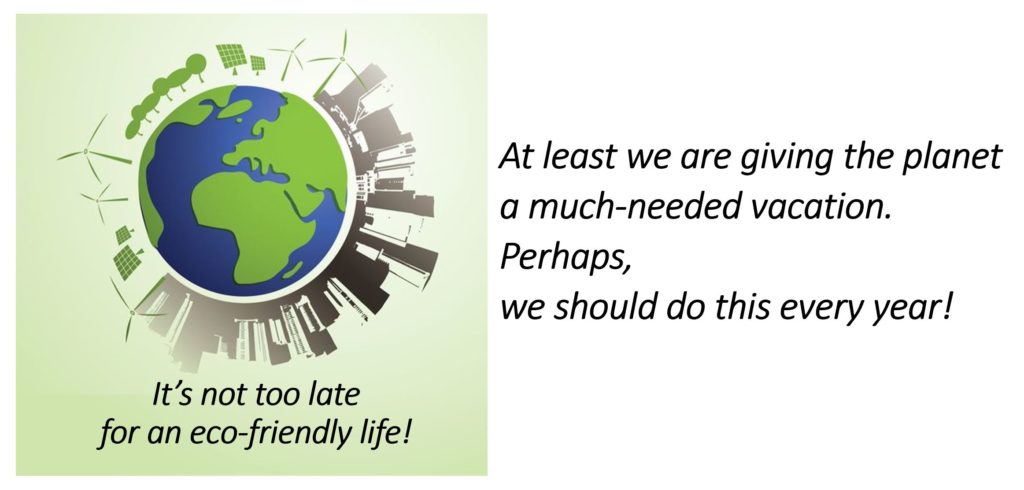
In October 2019, the World Economic Forum, the Johns Hopkins Center for Health Security, and the Bill & Melinda Gates Foundation worked on a pandemic simulation (a mock-up) called Event 201.
The simulation was an exercise to understand the challenges of a pandemic and figure out ways to respond. For the scenario, the group modeled a fictional coronavirus pandemic. It was not and could not have been a prediction of Covid-19.
They hypothesized (imagined) that a new type of coronavirus appeared. There are now 7 types of coronaviruses that affect humans. Coronaviruses are common in animals (particularly, bats) and, occasionally, they “jump” to humans. They are called “zoonotic,” literally meaning a disease that humans get from animals.
The Purpose
Real epidemic events are increasing, and have health, social, and economic consequences. Therefore, it is important to understand the risks, measures, and collaboration that would be needed during a pandemic.
The Simulation
Event 201 simulates an outbreak of a fictional coronavirus first transmitted from pigs to people in farms in Brazil. Remember, this is all a mock-up, running on computers, much like a video game. The model was based on the coronavirus SARS-CoV. It is a pathogen (disease-causing agent) that causes Severe Acute Respiratory Syndrome. This is a real illness that affects your airways and causes dry cough, headache, discomfort, and body aches. Some infected people suffer from diarrhea, and most develop pneumonia.
The spread in the model is slow at first. But, eventually, the virus adjusts to its new human hosts and gets good at jumping from person to person. Person to person transmission rapidly grows in dense, low-income neighborhoods, and finds its way to big cities.
From big cities in South America, the disease travels by flight to Portugal, the United States, and China and then elsewhere. At first, some countries seem able to control it, but the diseases comes back (is reintroduced) and no country can keep it under control. The simulation uses only 300 US and 300 international cities in its model.
In the first year of the simulation, no vaccine is developed. The only thing the simulation had to help the sick was a fictional antiviral drug (a medicine to treat the sick). But, in the simulation, that drug cannot stop the spread of the disease.
Since this fictional coronavirus is a new pathogen, all humans are “susceptible”, meaning we are all prone to catching the disease (like we are for real about Covid-19). For old diseases, humans develop “herd immunity” (also called community immunity). The word “herd” refers to the fact that we humans are indeed a pack of animals in nature! Herd immunity means that enough people can resist an infectious disease because they got a vaccine or caught the illness. Enough immune people make it unlikely for the disease to spread from person to person. (This is why vaccines are SOO important! People who cannot get a vaccine, like newborns and those chronically ill, get protection from the community barrier.)
During the initial months of the simulated pandemic, the number of cases doubles every week. The simulation also keeps track of the deaths and the social and economic consequences, which become more and more severe.
The simulation ends after 18 months of pandemic spread. In its fictional outcome, the disease kills 65 million people. The spread slows down at this point because there are very few “susceptible” people left. That means people are no longer prone to catching the disease because most have caught it and recovered.
The simulation suggests that the spread of an infectious disease like the fictional coronavirus would continue until there is an effective vaccine or until 80-90 % of the global population has been exposed. From that point on, the disease becomes an “endemic” childhood disease. An endemic disease is a disease that is constantly present in an area or population, but in relatively low frequency. For example, HIV is endemic in the US, where 1 in 300 people are infected, ) and Hepatitis B (HBV) is endemic throughout the world.
The Takeways
The group concluded that a new severe pandemic would cause grave illness , suffering, and social and economic disruptions worldwide. To them, the Event 201 pandemic simulation of 2019 “vividly demonstrated” gaps in readiness and in global communication and collaboration needed to respond to such a threat. They issued recommendations for “public-private cooperation for pandemic preparedness and response.”
As the event organizers emphasize, their simulation is not a prediction of our actual situation. But some of their recommendations are proving useful in the current, and actual, pandemic of Covid-19.
One more fact I want to highlight about our real Covid-19 pandemic: the unintended good from this unexpected evil is that we might be helping curve climate change! The shelter-in-place has slowed down pollution and greenhouse gases. It has been a “vacation for the planet” (in the words of my daughter) that we should consider giving again, for everyone’s sake.

